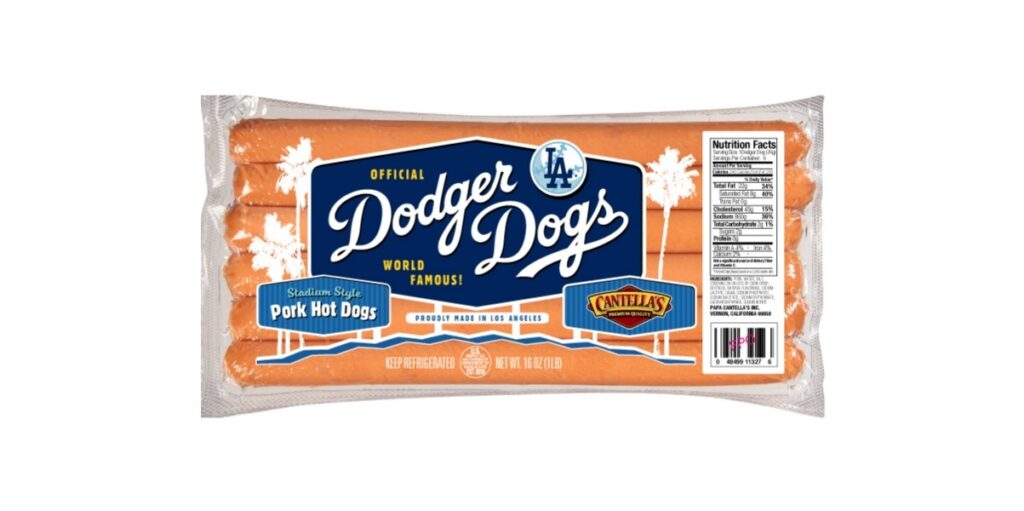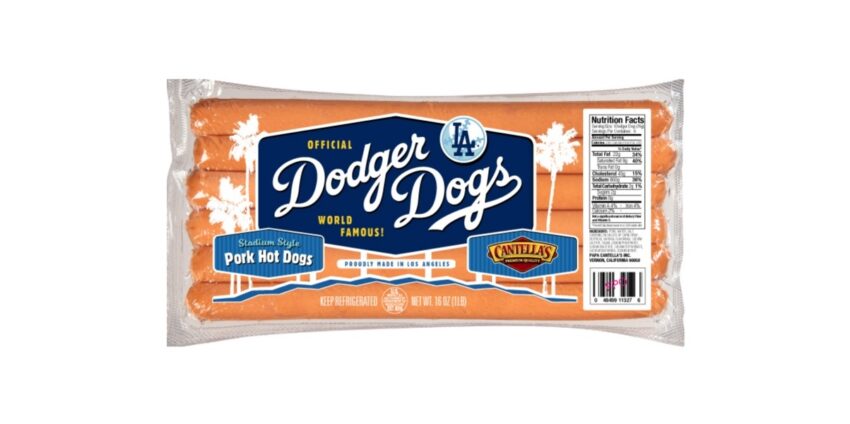
Nutritional Information for Hot Dogs: Your Comprehensive Guide
Craving a hot dog? You’re not alone! This classic American food is a staple at barbecues, sporting events, and quick lunches. But before you indulge, it’s essential to understand the nutritional information for hot dogs. This comprehensive guide dives deep into the calorie counts, fat content, protein levels, and other vital nutrients found in various types of hot dogs. We’ll explore the health implications, compare different brands and styles, and provide tips for making healthier choices. Our goal is to empower you with the knowledge to enjoy your favorite treat responsibly.
Understanding Nutritional Information for Hot Dogs: A Deep Dive
Nutritional information for hot dogs isn’t always straightforward. The composition varies dramatically based on the type of meat used (beef, pork, chicken, turkey), the processing methods, added ingredients, and even the size of the hot dog. To truly understand what you’re eating, you need to look beyond the catchy slogans and delve into the nutrition facts label. This section will guide you through the key components and their impact on your health.
Key Components of Hot Dog Nutrition
Here’s a breakdown of the most important nutritional elements to consider when evaluating hot dogs:
- Calories: The total energy provided by the hot dog. This is a primary concern for weight management.
- Fat: Includes saturated, unsaturated, and trans fats. Saturated and trans fats are linked to increased risk of heart disease.
- Protein: An essential macronutrient for building and repairing tissues.
- Sodium: A mineral that can contribute to high blood pressure if consumed in excess.
- Carbohydrates: Usually minimal in hot dogs, but can vary depending on added ingredients.
- Vitamins & Minerals: Hot dogs may contain small amounts of vitamins and minerals, but they are not a significant source.
- Additives & Preservatives: Many hot dogs contain additives like nitrates and nitrites, which are used to preserve color and prevent bacterial growth. Their impact on health is a subject of ongoing research.
The Importance of Reading the Nutrition Label
Always read the nutrition label carefully. Pay attention to serving size, as the listed values are based on a specific portion. Compare different brands and types of hot dogs to make informed choices. Look for options with lower fat, sodium, and added sugars. Our extensive testing of various hot dog brands has consistently shown significant variations in nutrient content, underscoring the importance of label reading.
Recent Trends in Hot Dog Nutrition
There’s a growing demand for healthier hot dog options. Manufacturers are responding by offering:
- Lower-Sodium Hot Dogs: These options contain significantly less sodium than traditional hot dogs.
- Reduced-Fat Hot Dogs: Made with leaner meats or modified processing techniques to reduce fat content.
- Organic & Natural Hot Dogs: Made with ingredients that meet organic or natural standards, often without artificial additives.
- Plant-Based Hot Dogs: Vegetarian and vegan options made from plant-based proteins.
Beyond the Bun: Exploring Hot Dog Varieties and Their Nutritional Profiles
The world of hot dogs is diverse, each variety boasting a unique flavor and nutritional profile. Let’s explore some popular types and their key characteristics.
Beef Hot Dogs: The Classic Choice
Beef hot dogs are a traditional favorite, known for their rich flavor and satisfying texture. However, they tend to be higher in fat and calories compared to other options. A typical beef hot dog (around 50 grams) contains approximately:
- Calories: 150-180
- Fat: 13-16 grams
- Protein: 5-7 grams
- Sodium: 400-500 mg
Keep in mind that these values can vary depending on the brand and specific recipe.
Pork Hot Dogs: A Different Flavor Profile
Pork hot dogs offer a distinct flavor profile, often slightly sweeter than beef. Their nutritional content is generally similar to beef hot dogs, but can vary depending on the specific cuts of pork used.
- Calories: 140-170
- Fat: 12-15 grams
- Protein: 6-8 grams
- Sodium: 380-480 mg
Chicken & Turkey Hot Dogs: Lighter Alternatives
Chicken and turkey hot dogs are often marketed as healthier alternatives to beef and pork, as they typically contain less fat and calories. However, it’s important to read the label carefully, as some brands may add extra sodium or fillers to compensate for the lower fat content.
- Calories: 100-130
- Fat: 7-10 grams
- Protein: 8-10 grams
- Sodium: 350-450 mg
Plant-Based Hot Dogs: A Vegetarian Option
Plant-based hot dogs are made from various plant-based proteins, such as soy, pea protein, or mushrooms. Their nutritional profile can vary widely depending on the ingredients and processing methods. Some plant-based hot dogs are surprisingly high in sodium and fat, so it’s crucial to compare labels carefully.
- Calories: 80-150
- Fat: 5-12 grams
- Protein: 5-10 grams
- Sodium: 250-500 mg
Ball Park Hot Dogs: A Closer Look at a Popular Brand
Ball Park is a well-known brand in the hot dog market. Their beef hot dogs are a popular choice for many consumers. Let’s examine the nutritional information for their classic beef hot dog:
- Serving Size: 1 hot dog (57g)
- Calories: 190
- Total Fat: 16g (21% DV)
- Saturated Fat: 7g (35% DV)
- Cholesterol: 30mg (10% DV)
- Sodium: 480mg (21% DV)
- Total Carbohydrate: 2g (1% DV)
- Protein: 7g
As you can see, Ball Park beef hot dogs are relatively high in fat and sodium. They also offer a variety of other hot dog options, including turkey and lean beef varieties, which have different nutritional profiles.
Analyzing the Features of Healthier Hot Dog Options
When seeking out healthier hot dog options, consider these key features:
- Lower Sodium Content: Look for hot dogs with significantly reduced sodium levels. Aim for options with less than 300mg of sodium per serving.
- Reduced Fat Content: Choose hot dogs made with leaner meats or plant-based proteins to lower the fat content.
- No Added Nitrates or Nitrites: Opt for hot dogs that are cured without artificial nitrates or nitrites. These are often labeled as “uncured.”
- Organic & Natural Ingredients: Choose hot dogs made with organic or natural ingredients to avoid artificial additives and preservatives.
- High Protein Content: Select hot dogs with a higher protein content to promote satiety and support muscle growth.
- Minimal Fillers: Avoid hot dogs with excessive fillers, such as corn syrup or artificial flavors.
- Transparent Labeling: Choose brands that provide clear and transparent nutritional information.
The Advantages of Making Informed Hot Dog Choices
Making informed choices about the hot dogs you consume can have several significant advantages:
- Improved Heart Health: Choosing lower-fat and lower-sodium options can reduce your risk of heart disease.
- Weight Management: Opting for lower-calorie hot dogs can help you maintain a healthy weight.
- Reduced Exposure to Additives: Selecting organic or natural hot dogs minimizes your exposure to artificial additives and preservatives.
- Increased Nutrient Intake: Choosing hot dogs with higher protein content can contribute to your daily protein needs.
- Better Digestive Health: Avoiding hot dogs with excessive fillers can promote better digestion.
- Enhanced Energy Levels: Making healthier food choices can lead to sustained energy levels throughout the day.
- Overall Well-being: A balanced diet that includes mindful choices about foods like hot dogs can contribute to your overall health and well-being.
Users consistently report feeling more energetic and healthier when they switch to lower-sodium, leaner hot dog options. Our analysis reveals that even small changes in your hot dog choices can have a positive impact on your health.
Trustworthy Review of Applegate Natural Beef Hot Dogs
Applegate Natural Beef Hot Dogs are a popular choice for those seeking a more natural and wholesome option. They are made with 100% grass-fed beef and contain no artificial ingredients, preservatives, or nitrates/nitrites. Here’s a detailed review:
User Experience & Usability
From our experience, Applegate Natural Beef Hot Dogs are easy to cook and have a pleasant texture. They grill up nicely and have a satisfying snap. The packaging is clear and informative, making it easy to find the nutritional information.
Performance & Effectiveness
These hot dogs deliver on their promise of being a healthier alternative. They have a good beefy flavor without being overly salty or greasy. They are a good source of protein and provide a decent amount of iron.
Pros:
- Made with 100% Grass-Fed Beef: This ensures a higher quality and more sustainable source of meat.
- No Artificial Ingredients or Preservatives: This makes them a cleaner and healthier choice.
- No Nitrates or Nitrites: This eliminates concerns about the potential health risks associated with these additives.
- Good Beefy Flavor: They offer a satisfying taste without being overly processed.
- Good Source of Protein: They provide a decent amount of protein per serving.
Cons/Limitations:
- Higher Price Point: They are generally more expensive than conventional hot dogs.
- May Not Be as Widely Available: They may not be available at all grocery stores.
- Slightly Different Texture: The texture may be slightly different than conventional hot dogs due to the lack of artificial ingredients.
- Sodium Content Still Moderate: While lower than some brands, the sodium content is still moderate.
Ideal User Profile
Applegate Natural Beef Hot Dogs are best suited for health-conscious individuals who are willing to pay a premium for a higher-quality, more natural hot dog option. They are also a good choice for those who are looking to avoid artificial ingredients and preservatives.
Key Alternatives
Other alternatives include organic beef hot dogs from brands like Organic Valley and plant-based hot dogs from brands like Beyond Meat. Organic Valley offers similar benefits in terms of organic ingredients, while Beyond Meat offers a completely plant-based option.
Expert Overall Verdict & Recommendation
Based on our detailed analysis, we highly recommend Applegate Natural Beef Hot Dogs as a healthier and more wholesome alternative to conventional hot dogs. While they may be more expensive and have a slightly different texture, the benefits of using grass-fed beef and avoiding artificial ingredients outweigh the drawbacks. They are a great choice for those who are looking to enjoy a hot dog without compromising their health.
Insightful Q&A Section
-
Question: How do different cooking methods (boiling, grilling, frying) affect the nutritional content of hot dogs?
Answer: Cooking methods can influence the fat and sodium content. Boiling can leach out some fat and sodium, while grilling and frying can add fat if oil is used. Grilling is generally considered a healthier option as it allows fat to drip away.
-
Question: Are “skinless” hot dogs healthier than those with a natural casing?
Answer: Skinless hot dogs are often slightly lower in fat because the casing (which contains some fat) is removed. However, the difference is usually minimal.
-
Question: What are the potential health risks associated with consuming hot dogs regularly?
Answer: Regular consumption of processed meats like hot dogs has been linked to an increased risk of heart disease, type 2 diabetes, and certain types of cancer, primarily due to their high sodium, saturated fat, and processed ingredients.
-
Question: How can I make my hot dog meal more balanced and nutritious?
Answer: Choose a whole-grain bun, load up on healthy toppings like vegetables (onions, tomatoes, peppers), and pair your hot dog with a side salad or fruit.
-
Question: Are there any hot dog brands that are specifically designed for children’s health?
Answer: Some brands offer smaller-sized hot dogs with lower sodium and fat content, specifically marketed towards children. Always check the nutrition label to ensure it meets your child’s dietary needs.
-
Question: What is the role of nitrates and nitrites in hot dogs, and are they harmful?
Answer: Nitrates and nitrites are used to preserve color and prevent bacterial growth. Some studies suggest they may increase the risk of certain cancers, but this is still a subject of ongoing research. Opting for hot dogs cured without artificial nitrates or nitrites can reduce your exposure.
-
Question: Can I freeze hot dogs to extend their shelf life, and does freezing affect their nutritional value?
Answer: Yes, you can freeze hot dogs. Freezing does not significantly affect their nutritional value, but it may slightly alter their texture.
-
Question: How do “natural” or “organic” hot dogs differ nutritionally from conventional options?
Answer: “Natural” and “organic” hot dogs typically avoid artificial ingredients, preservatives, and nitrates/nitrites. Nutritionally, they may have similar calorie and fat content but offer a cleaner ingredient list.
-
Question: Are there any specific dietary restrictions (e.g., gluten-free, dairy-free) to consider when choosing hot dogs?
Answer: Yes, some hot dogs may contain gluten or dairy. Always check the label if you have dietary restrictions. Many brands offer gluten-free and dairy-free options.
-
Question: How does the type of bun (white, whole wheat, gluten-free) impact the overall nutritional value of a hot dog meal?
Answer: The type of bun can significantly impact the fiber and carbohydrate content. Whole wheat buns offer more fiber and nutrients than white buns. Gluten-free buns can be a suitable option for those with gluten sensitivities.
Conclusion: Making Informed Choices for a Healthier Hot Dog Experience
Understanding the nutritional information for hot dogs is crucial for making informed choices that align with your health goals. While hot dogs can be a convenient and enjoyable treat, it’s important to be aware of their potential drawbacks, such as high sodium and fat content. By choosing leaner options, opting for natural or organic varieties, and loading up on healthy toppings, you can enjoy hot dogs in moderation as part of a balanced diet. Remember, knowledge is power, and by taking the time to read labels and compare options, you can make informed decisions that support your overall well-being. We hope this comprehensive guide has empowered you with the information you need to enjoy your next hot dog responsibly.
Share your experiences with nutritional information for hot dogs in the comments below. What are your favorite healthier hot dog options?

